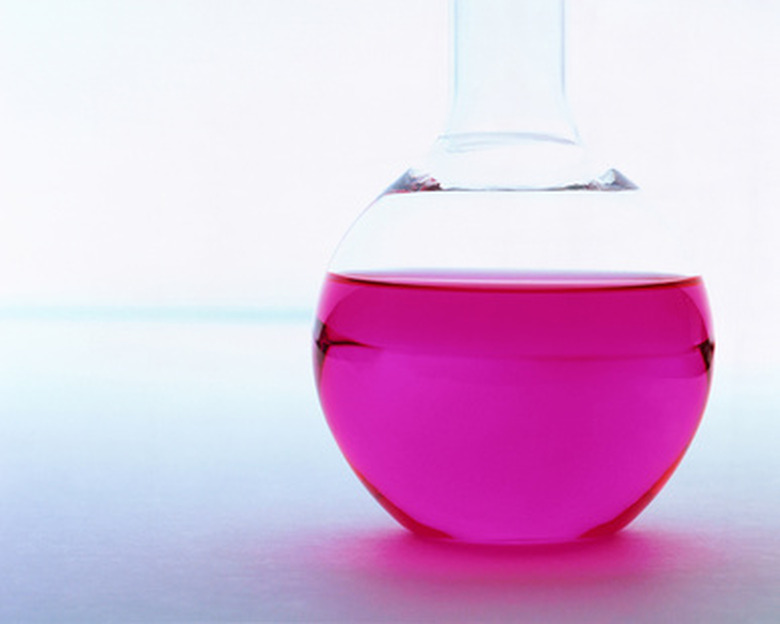How To Convert Conductivity To Concentration
Conductivity measures how well electrical current passes through a solution and is directly related to ion concentration. The higher the ion concentration in your solution, the better it conducts electricity. Use a standard conversion factor to make a best estimate of concentration if conductivity is known.
1. Measure Conductivity
Measure the conductivity of your solution. Different conductivity meters vary in their operation, but typically you place the probe in the solution and wait until the reading stabilizes on the display. The current is usually in microohms or microsiemens (these units are equal to each other), although some older meters may only read resistivity.
2. Convert to Ohms
Convert the current reading to ohms. If your meter does not convert to microohms or microsiemens for you, write down the resistivity reading and use Ohms Law to find conductivity. For the following formulas, G is conductivity in ohms, R is resistivity, V is voltage and I is amps:
R= I ÷ V
G= 1 ÷ R
G is then divided by 1 million to get microohms or microsiemens.
3. Calculate Ppm
Calculate ppm (parts per million) from microohms (the measure of conductivity). Multiply microohms or microsiemens by 0.64 to obtain ppm. So concentration in ppm = conductivity in microohms x 0.64.
4. Change to Molarity
Change ppm to molarity. In most cases, you want to know molarity rather than ppm for your solution. Use the following principles to calculate molarity:
ppm = 0.001 g of solute in 1 liter of solution (a solute is the substance dissolved into the solvent to make up the solution).
Molarity = moles/liter, so by taking the atomic weight (grams/moles) of the solute (found either in the periodic table or on the solute bottle's label) you can calculate molarity.
ppm (grams/liter) divided by atomic weight (grams/mole) equals molarity (moles/liter).
Things Needed
- Solution
- Conductivity meter
- Calculator (optional)
TL;DR (Too Long; Didn't Read)
Temperature can affect conductivity. For the best readings, either measure your solution in an environment that is 25 degrees Celsius or use a conductivity meter that adjusts its readings based on ambient temperature.
If your solution has numerous solutes in it, you will not be able to calculate molarity from conductivity. The conductivity-to-concentration conversion works best in a solution with only one solute.
Cite This Article
MLA
Painter, Tammie. "How To Convert Conductivity To Concentration" sciencing.com, https://www.sciencing.com/convert-conductivity-concentration-6925703/. 4 June 2018.
APA
Painter, Tammie. (2018, June 4). How To Convert Conductivity To Concentration. sciencing.com. Retrieved from https://www.sciencing.com/convert-conductivity-concentration-6925703/
Chicago
Painter, Tammie. How To Convert Conductivity To Concentration last modified March 24, 2022. https://www.sciencing.com/convert-conductivity-concentration-6925703/
